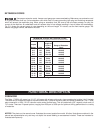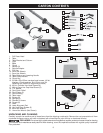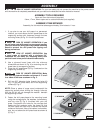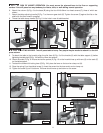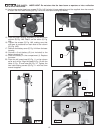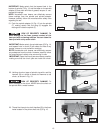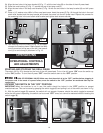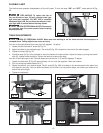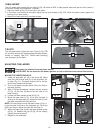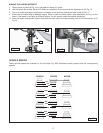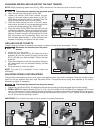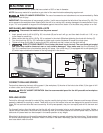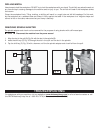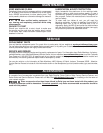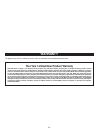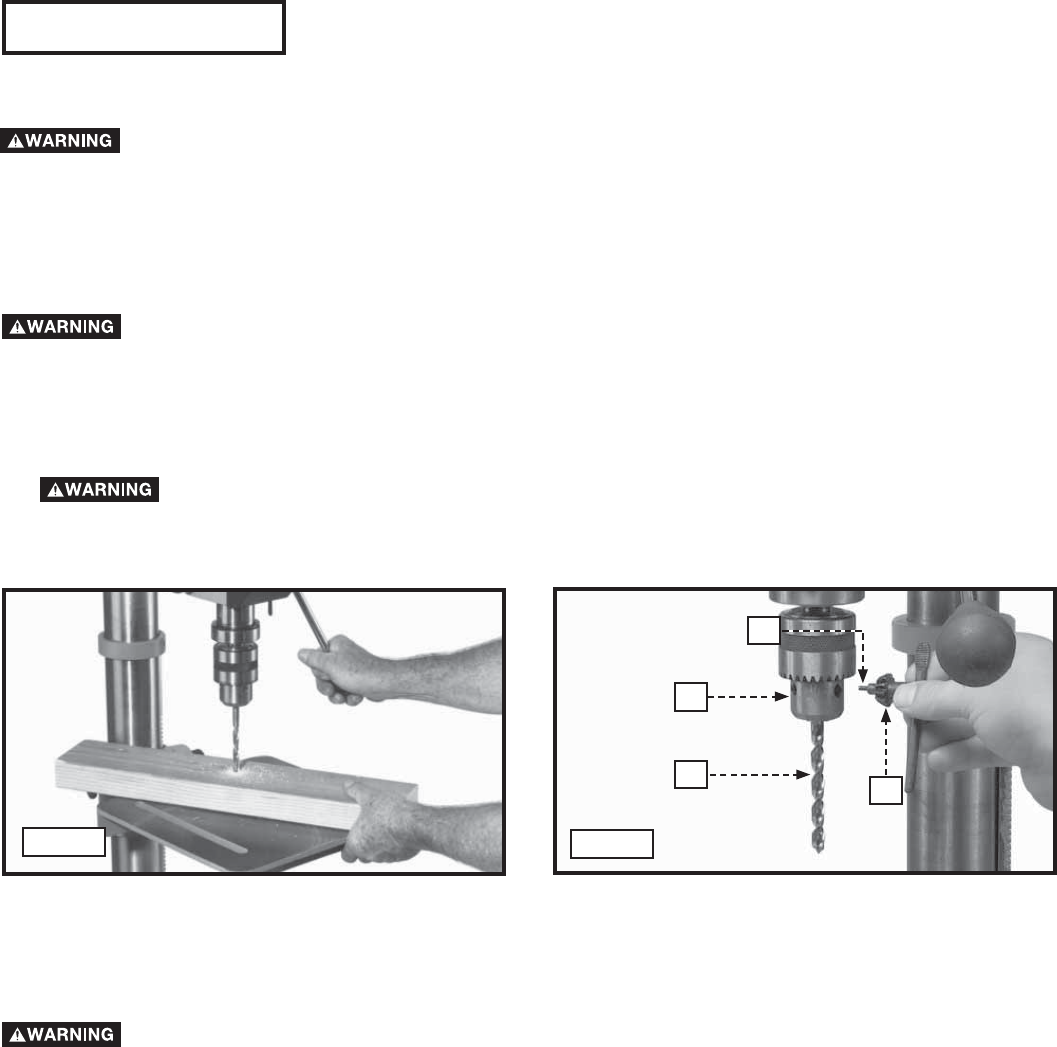
19
NOTE: Use bits with this drill press that have a shank of 5/8" or less in diameter.
NOTE: Use scrap material for practice to get a feel of the machine before attempting regular work.
RISK OF UNSAFE OPERATION. The use of accessories and attachments not recommended by Delta
may result in risk of injury.
IMPORTANT: If the workpiece is long enough, position it with one end against the left side of the column (Fig. 32). This
action prevents the workpiece from rotating with the drill bit or cutting tool, causing damage to the workpiece or injury
to you. If it is not possible to support the workpiece against the column, fasten it to the table using clamps or a vise.
1. Insert smooth end of drill bit (A) Fig. 33, into chuck (B), as far as it will go, and then back the bit out 1/16", or up
to the flutes for small bits.
2. Make certain that the drill bit (A) Fig. 33, is centered in the chuck (B) before tightening the chuck with the key (C).
3. Turn the chuck key (C) Fig. 33, clockwise to tighten and counter-clockwise to loosen the chuck jaws.
4. Tighten all three chuck jaws to secure the drill bit sufficiently so that it does not slip while drilling.
5. RISK OF FLYING OBJECTS. Don't tether the chuck key to the tool. The cord could get tangled
and chuck key could be thrown at user or tool could be damaged. Also, make sure that the chuck key (C)
Fig. 33, is removed from chuck before starting drill press. Your chuck key (C) is equipped with a self-ejecting pin
(D) which helps minimize the hazard of the key being left in the chuck.
CORRECT DRILLING SPEEDS
Factors that determine the best drilling speed 1) the workpiece, 2) the size of the hole to be drilled, 3) the type of drill
or other cutter, and 4) the quality of cut.
RISK OF UNSAFE OPERATION. Use the recommended speed for the drill press bit and workpiece
material.
MACHINE USE
INSTALLING AND REMOVING DRILL BITS
Disconnect the machine from the power source!
B
A
D
C
Fig. 32
Fig. 33
DRILLING WOOD
Twist drills, although intended for metal drilling, may be used for boring holes in wood. However, machine spur bits are
generally preferred for working in wood. These bits cut cut a flat-bottom hole and are designed for removal of wood
chips. Do not use hand bits that have a screw tip. At drill press speeds, they turn too rapidly and will lift the work and
spin it.
For through boring, align the table so that the bit will enter the center hole to avoid damage to the table. Scribe a
vertical line on the front of the column and a matching mark on the table bracket and the drill press head, so that the
table and drill press head can be clamped in the center position at any height.
When the bit is about to cut through the workpiece, feed it slowly to prevent spintering the bottom face. To help protect
the bit and reduce splintering, a wooden insert is included in the table. Alternately, you can use a scrap piece of wood
as a base block under the work.



